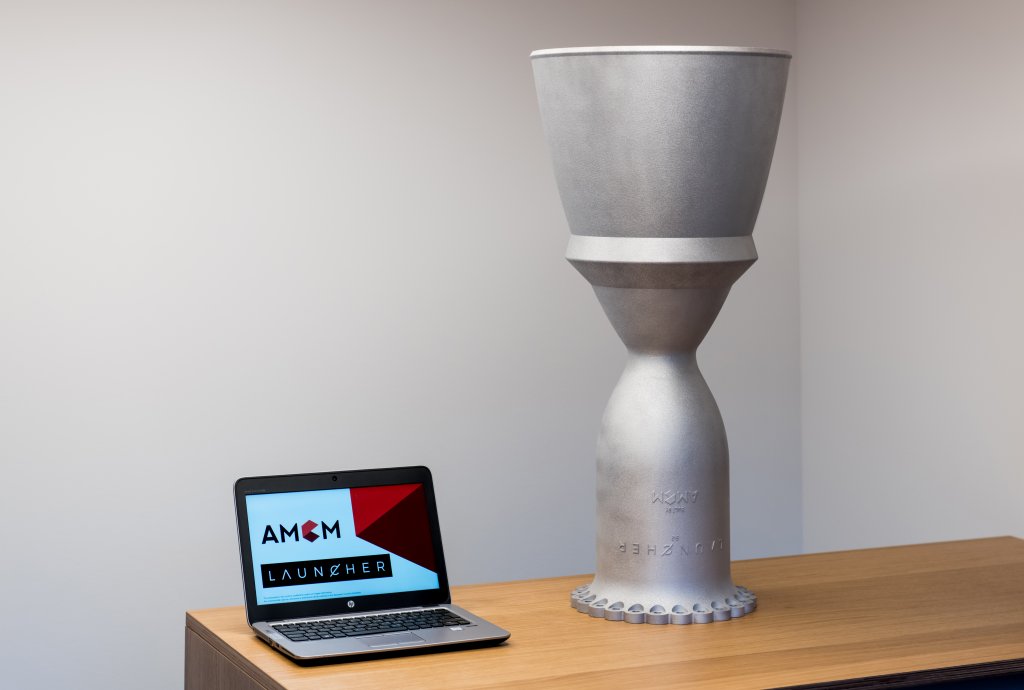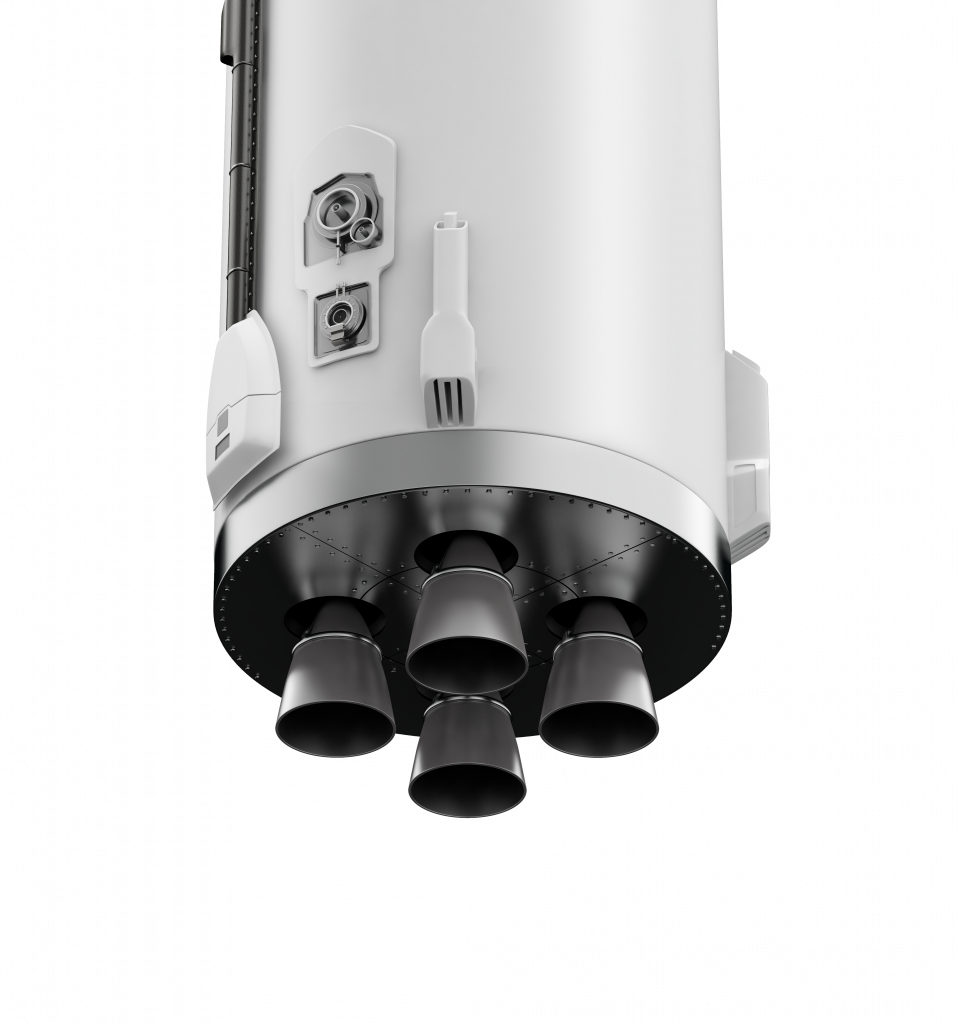![]() Spending on space exploration is booming. We have seen many ambitious private endeavors come onto the scene in the last few years, from building and launching satellites into Low Earth Orbit (LEO) for telecommunications, to prepping crews and cargo to go to the International Space Station (ISS) and even developing programs allowing fee-paying tourists to go beyond Earth’s atmosphere, it is all happening now. The truth is that reduced costs and growing competition are letting private firms become involved in this new space race, which unlike the previous one, that started 62 years ago with Sputnik, is driven by more than just a need to dominate space. For companies offering satellite launch capabilities to private clients and national governments, the time has never been better, over 70 countries now have space programs and only a dozen of them have any sort of launch capability, the same goes for companies. This is where rocket startups like Launcher come to play.
Spending on space exploration is booming. We have seen many ambitious private endeavors come onto the scene in the last few years, from building and launching satellites into Low Earth Orbit (LEO) for telecommunications, to prepping crews and cargo to go to the International Space Station (ISS) and even developing programs allowing fee-paying tourists to go beyond Earth’s atmosphere, it is all happening now. The truth is that reduced costs and growing competition are letting private firms become involved in this new space race, which unlike the previous one, that started 62 years ago with Sputnik, is driven by more than just a need to dominate space. For companies offering satellite launch capabilities to private clients and national governments, the time has never been better, over 70 countries now have space programs and only a dozen of them have any sort of launch capability, the same goes for companies. This is where rocket startups like Launcher come to play.
The Brooklyn-based firm has been developing what it says is the world’s largest 3D printed liquid rocket engine combustion chamber in a single piece. The E-2 engine, which was made in Germany by AMCM using its specialized M4K printer, has been tested many times at the company’s test facility on Long Island’s Naval Weapons Industrial Reserve Plant (where the US jetfighter F-14 Tomcat used to be assembled), in New York. There, the Launcher team works out of a deserted airplane runway where they are ingeniously using shipping containers to test their engines. But this is just the beginning of Launcher’s decade long plan to build a 65-foot-tall rocket that will send small satellites to orbit.
Based out of the Brooklyn Navy Yard in New York, the company was formed in March 2017 by Max Haot, an internet entrepreneur who created the video streaming company Livestream. After selling it to Vimeo in 2017, he chose to focus on getting Launcher rockets to orbit.
“I always had a personal desire to stretch my career to the aerospace industry and contribute to space exploration,” Haot told 3DPrint.com. “I was just coming out of my last entrepreneurial adventure with Livestream and that’s when I thought about it: why not move to space? After some research, it was clear that there were a lot of opportunities in the launch industry and that’s how I got the startup going. Everyone in the team has a general interest in space exploration and by providing the rockets, propulsion and 3D printed engines we are offering a platform for satellites to make life on Earth better. I think it’s a great start.”
The goal is very ambitious and very rare. Beyond space agencies, only a few companies have already successfully sent rockets to space with payloads, including Elon Musk’s SpaceX and Rocket Lab, but they are not the only ones trying to tap the smaller private satellite launch market, small rockets are a crucial part of the growing space industry.
“Small satellite makers were basically catching a ride on the bigger rockets, accounting for one percent or less of the payload (and revenue), so they couldn’t choose when the rocket launched or even where it was going because the main customer was taking up a 500 million dollar satellite and calling all the shots. But now, these smaller rockets, that cost less than 10 million dollars, can allow companies to send their satellites to space quicker. They can either buy the full rocket which would accommodate between 10 to 40 small satellites, or they can rideshare with other companies, but still have a 10 to 20 percent of the revenue (meaning they get to have a say in the launch),” Haot went on.
Since Sputnik, around 8,378 satellites have been sent to space according to the Index of Objects Launched into Outer Space maintained by the United Nations Office for Outer Space Affairs (UNOOSA). These days there are 4,857 satellites currently orbiting the planet, but the majority are not even active, with only 1,957 actually operational (and they also will have a limited lifetime). Now there are over 20,000 proposals for new satellites in the next five years – that means we are looking at a market that will change dramatically, reflecting a growing trend for startups and customers to become more involved in space technology.
In order to start testing flights by 2023, Haot began developing the E-2 engine, which will eventually be part of a four-engine 65-feet high rocket that can deliver small CubeSats (satellites that can weigh as little as 10 pounds) to orbit.
Haot claims Launcher’s E-2 engine will be the highest performance engine in the small satellite launcher industry, with the largest thrust, lowest propellant consumption and lowest cost per-pound of thrust. Consuming the least amount of propellant for the maximum amount of thrust, he expects to be able to take twice more payload than the competition for the same rocket size. To do this, the company has focused exclusively on engine development and they don’t want to start building the rocket until E-2 tests prove to work perfectly.
One of the ways Haot expects E-2 to reach its high-performance target is by using 3D printing in a copper alloy which reduces cost, complexity, and manufacturing lead time for most parts, including the combustion chamber, injector, and turbopump.
“We decided we wanted a 10-ton force (22,000 pounds) of thrust engine instead of a smaller one, but we didn’t want to end up welding together different sections of the combustion chamber (the main part of the engine). So the problem in the 3D printing industry was that we couldn’t find a big enough 3D printer for the job, so as part of our roadmap we decided to wait until we found a 3D printer big enough to do it in one print. We worked with EOS, AMCM, and copper, which is the best alloy for a combustion chamber, leveraging a custom printer and finally successfully producing a large single-part 3D printed copper combustion chamber.”
The E-2 liquid rocket engine chamber was created on the M4K 3D printer, a customized EOS M400  series machine that can fabricate parts up to 45x45x100cm. The Launcher team explained that 3D printing both the rocket chamber and nozzle together as one part allows for the highest performance in cooling, along with reducing part count and complexity in production. Functioning as part of the EOS group, AMCM produces customized AM machines, and Launcher is the first customer of the AMCM M4K.
series machine that can fabricate parts up to 45x45x100cm. The Launcher team explained that 3D printing both the rocket chamber and nozzle together as one part allows for the highest performance in cooling, along with reducing part count and complexity in production. Functioning as part of the EOS group, AMCM produces customized AM machines, and Launcher is the first customer of the AMCM M4K.
In 2018 the company tested their 1/40th size development engine E-1 (Propellants: LOX/RP-1, Regen cooling, printed on the EOS M290 in Inconel 718, in three parts, 500-pound thrust, augmented spark ignition). The E-1 helps them validate the design of the 3D printed combustion chamber and internal cooling channels before applying it to the 40 times larger E-2 3D printed rocket engines and components. Last February AMCM unveiled a prototype from a Launcher design in Aluminum, which they believe is the largest single part combustion chamber ever 3D printed, and this month AMCM is developing the final part for testing in copper. That means next September, the AMCM machine and engineers will deliver a full-size engine in copper ready to begin the test-firing by the end of the year.
“We have done a lot of subscale testing (over 100 times) to prove that we are able to reach the combustion performance that we want for our full scale engine,” Haot said.
Before scaling to the full-size E-2 engine, Launcher is proving its design and 3D printed materials on the subscale version Engine-1 or E-1. The company claims that thanks to the design, the use of 3D printed copper alloy, and the unique liquid oxygen cooling system, their E-1 subscale engine is so efficient (over 98%) that it produces a blue exhaust plume—unprecedented for kerosene engines. It was proven for over 15 minutes of test time at the highest performance combustion mixture ratio between liquid oxygen and kerosene.
“We expect the first test flights in 2023, but will only become fully commercial and profitable after a few tests, in 2026. Right now there is not enough supply of small launching capacity, so there is a backlog. With tens of thousands of proposals for new small and nano-sized satellites to be launched in the next 5 years, the demand is certainly not the issue. The questions we need to answer are: whether we can be competitive, come to market and reach orbit. We expect to have a higher performance rocket that could eventually carry more payload than our competitors and with the same rocket size. In 2026, if we do four flights per year we could break even, however we are targeting 12 flights,” he went on.
For now, the company is looking to capitalize on the demand for small satellites by building a rocket that will focus on sending the smaller payloads to orbit. However, they claim to be building what they hope “will be a long-lasting aerospace company”. Suggesting that “the small satellite launcher is our first product”, and that they would like to “contribute to space exploration in general”.
Launcher’s rocket is priced to that smaller market, with plans to sell missions for about $10 million per launch, and customers that hope to operate within LEO and Medium Earth Orbit (MEO), because the higher they go, the lighter the payload they can take. One of the big customers for a small satellite launch is the US government, especially NASA, the Air Force and the Department of Defense since they have stated their desire to miniaturize all of their satellites. But Haot knows that the first step is to develop the capability and reach orbit, after that, who knows, perhaps they can send payloads to the moon or even further. But we’ll have to wait a bit, at least until their test run in 2023.
A Note On Sustainability in Space
For those of you who are wondering how whether an industry in LEO will have a long-term negative effect on our life on this planet, Haot suggests otherwise, saying that today rocket companies are being responsible.
“There are inactive satellites, rocket parts and even the debris of satellite collision in space. Some of these little objects reenter, in the LEO orbit they might start to reenter after five years but farther away in geostationary orbit the lifetime for natural deorbit might be a thousand years. That means there is a graveyard orbit, and the satellite manufacturer has the responsibility to remove it, so it doesn’t occupy some of the useful geostationary orbit space,” explained Haot.
Guidelines issued by the inter-agency space debris coordination committee (IADC) demand LEO satellites to deorbit within 25 years after the end of operations. But Haot proposes that if someone launches a satellite they will include a deorbiting capability designed to help mitigate the growing space-junk problem.
[Images: Launcher, AMCM and Tobias Hase]“If we look at all the nanosats that are being proposed, they are in low enough orbit that they mostly don’t have propulsion, but its part of the design that they will reenter five years at most, by the location of LEO its less of a problem due to automatic deorbiting, but for further orbit it would be great to have more regulation, so that when satellites are not being used they have to deorbit. Launcher wants to be participants in this industry and ensure the second stage deorbit, which means you can carry a little bit less payload so you have propellant to deorbit, but we know it is the right thing to do,” he concluded.
Subscribe to Our Email Newsletter
Stay up-to-date on all the latest news from the 3D printing industry and receive information and offers from third party vendors.
You May Also Like
3D Printing Unpeeled: New Arkema Material for HP, Saddle and Macro MEMS
A new Arkema material for MJF is said to reduce costs per part by up to 25% and have an 85% reusability ratio. HP 3D HR PA 12 S has been...
3D Printing News Briefs, January 20, 2024: FDM, LPBF, Underwater 3D Printer, Racing, & More
We’re starting off with a process certification in today’s 3D Printing News Briefs, and then moving on to research about solute trapping, laser powder bed fusion, and then moving on...
3D Printing Webinar and Event Roundup: December 3, 2023
We’ve got plenty of events and webinars coming up for you this week! Quickparts is having a Manufacturing Roadshow, America Makes is holding a Member Town Hall, Stratafest makes two...
Formnext 2023 Day Three: Slam Dunk
I’m high—high on trade show. I’ve met numerous new faces and reconnected with old friends, creating an absolutely wonderful atmosphere. The excitement is palpable over several emerging developments. The high...








































